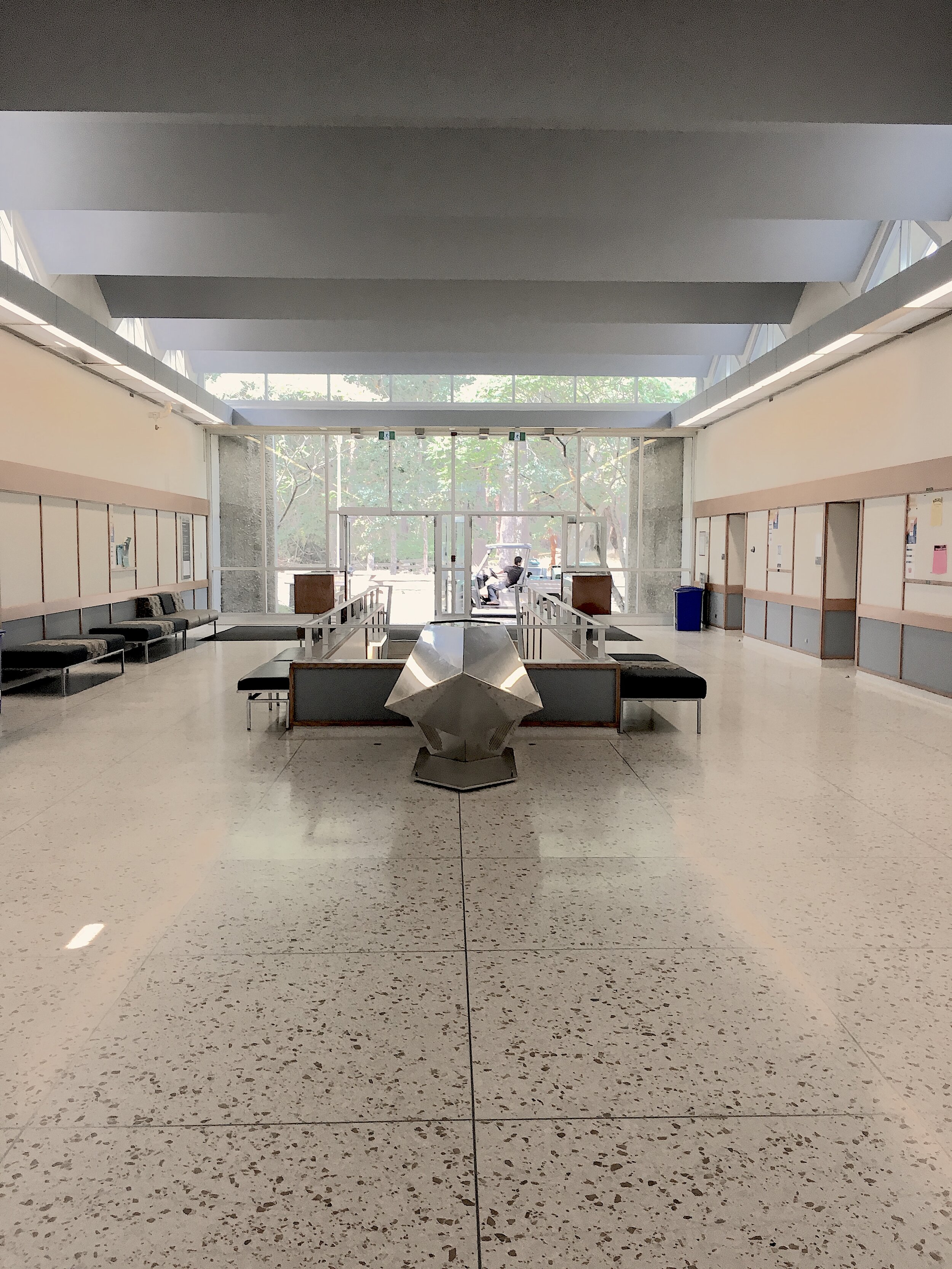

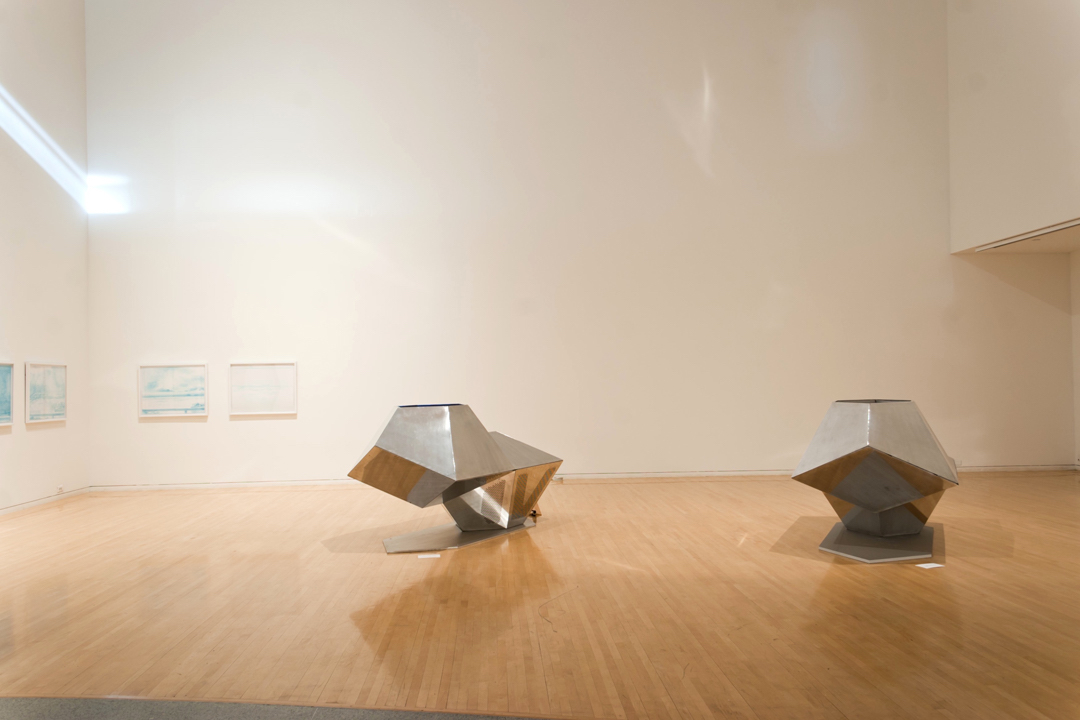
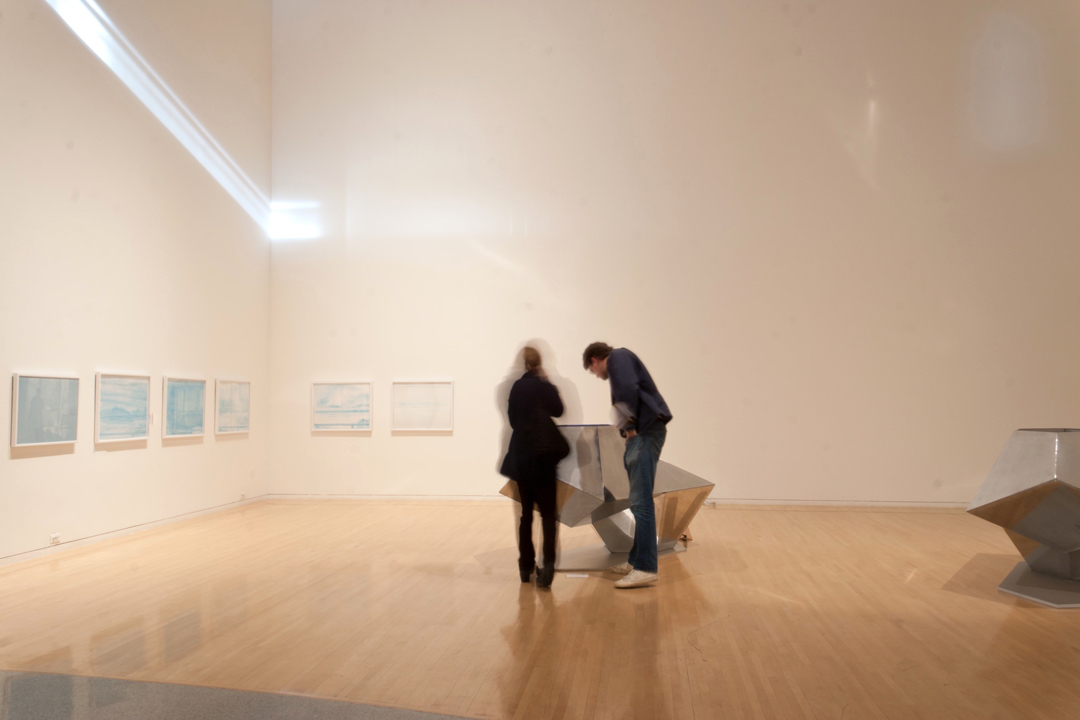

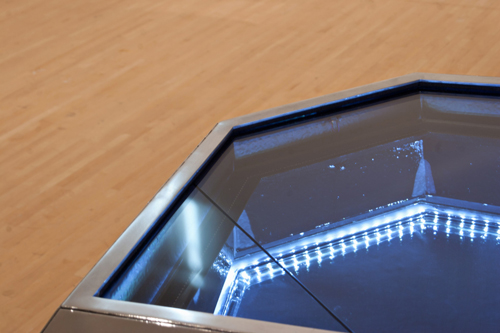
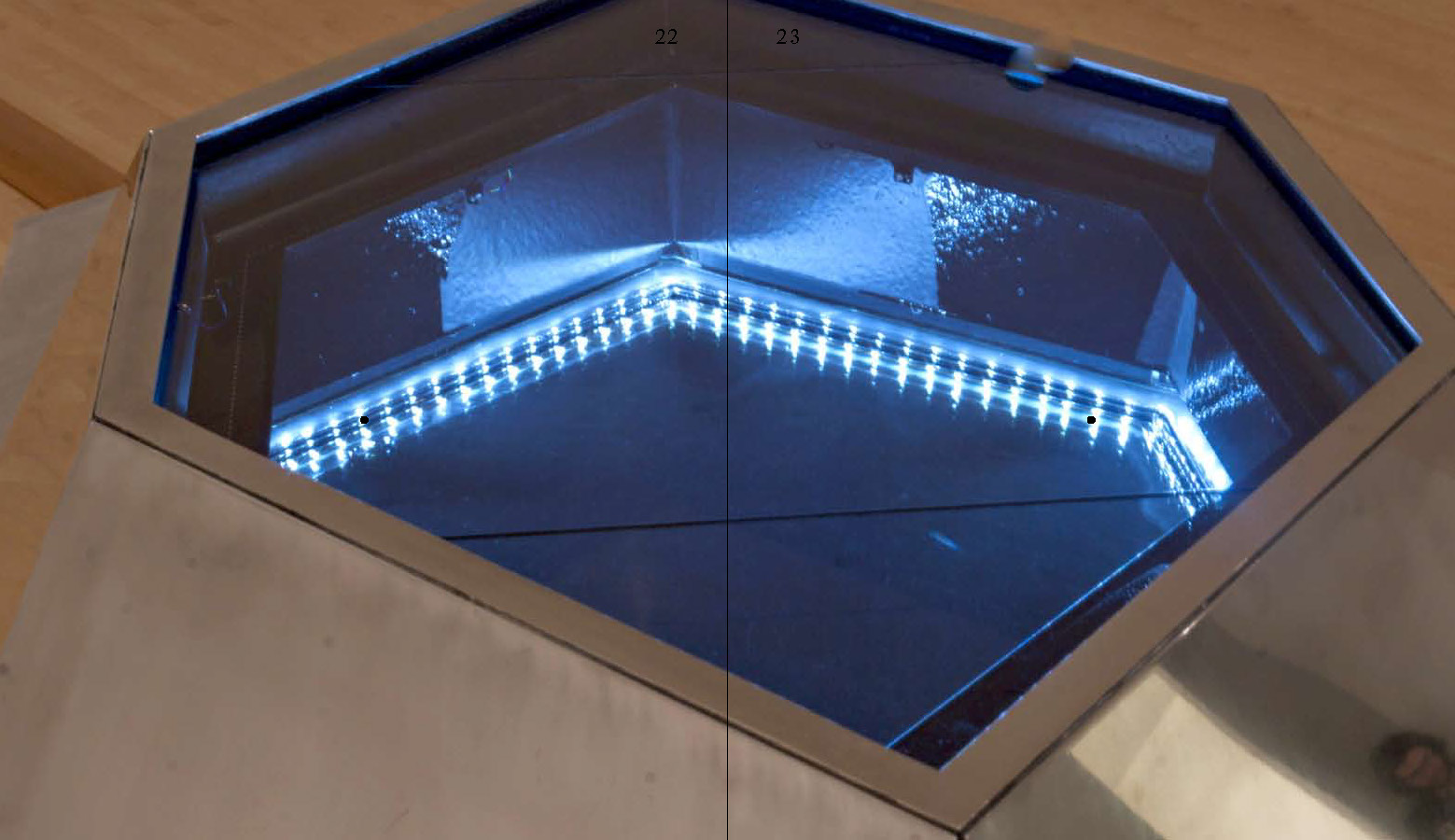


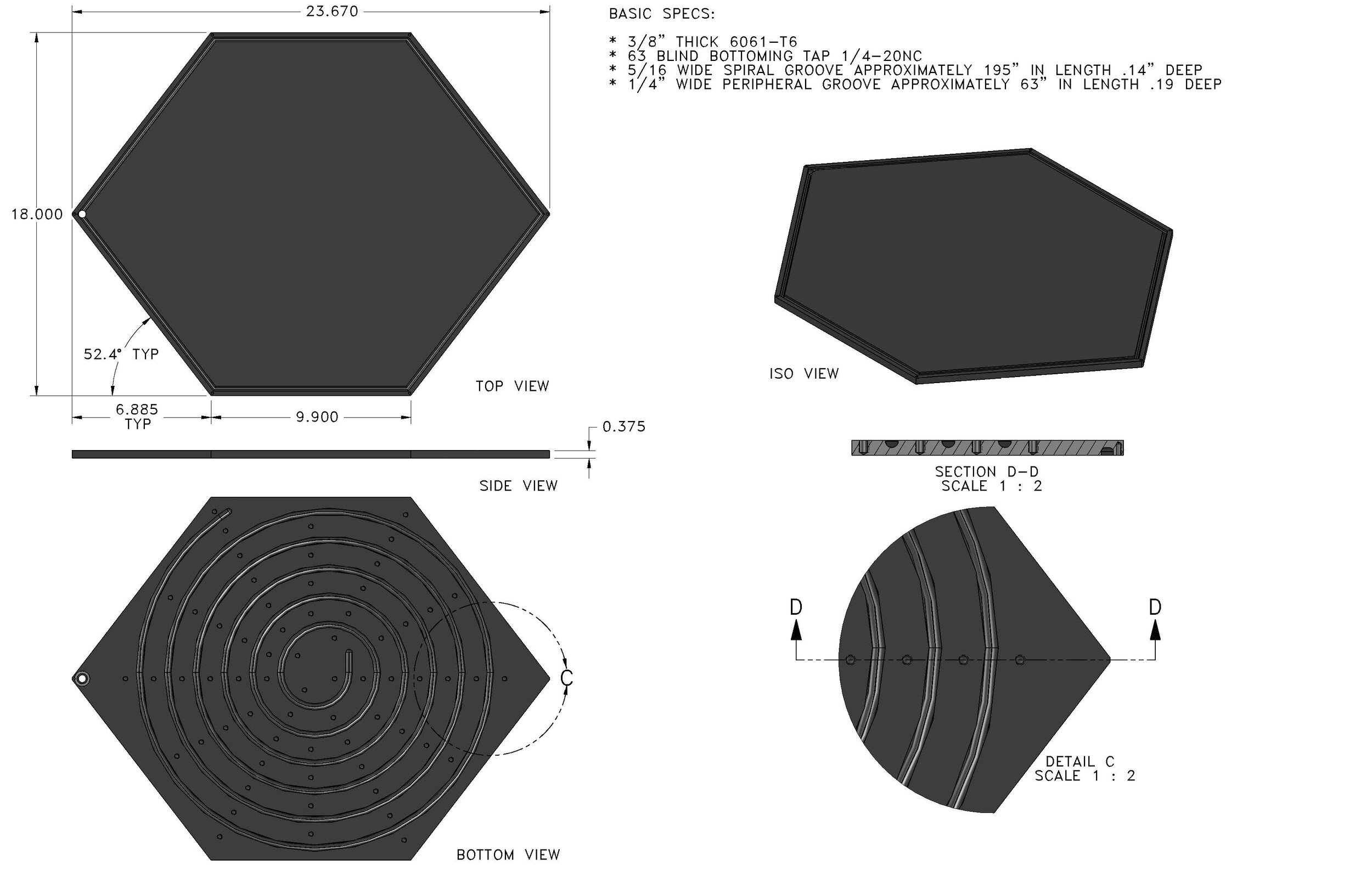
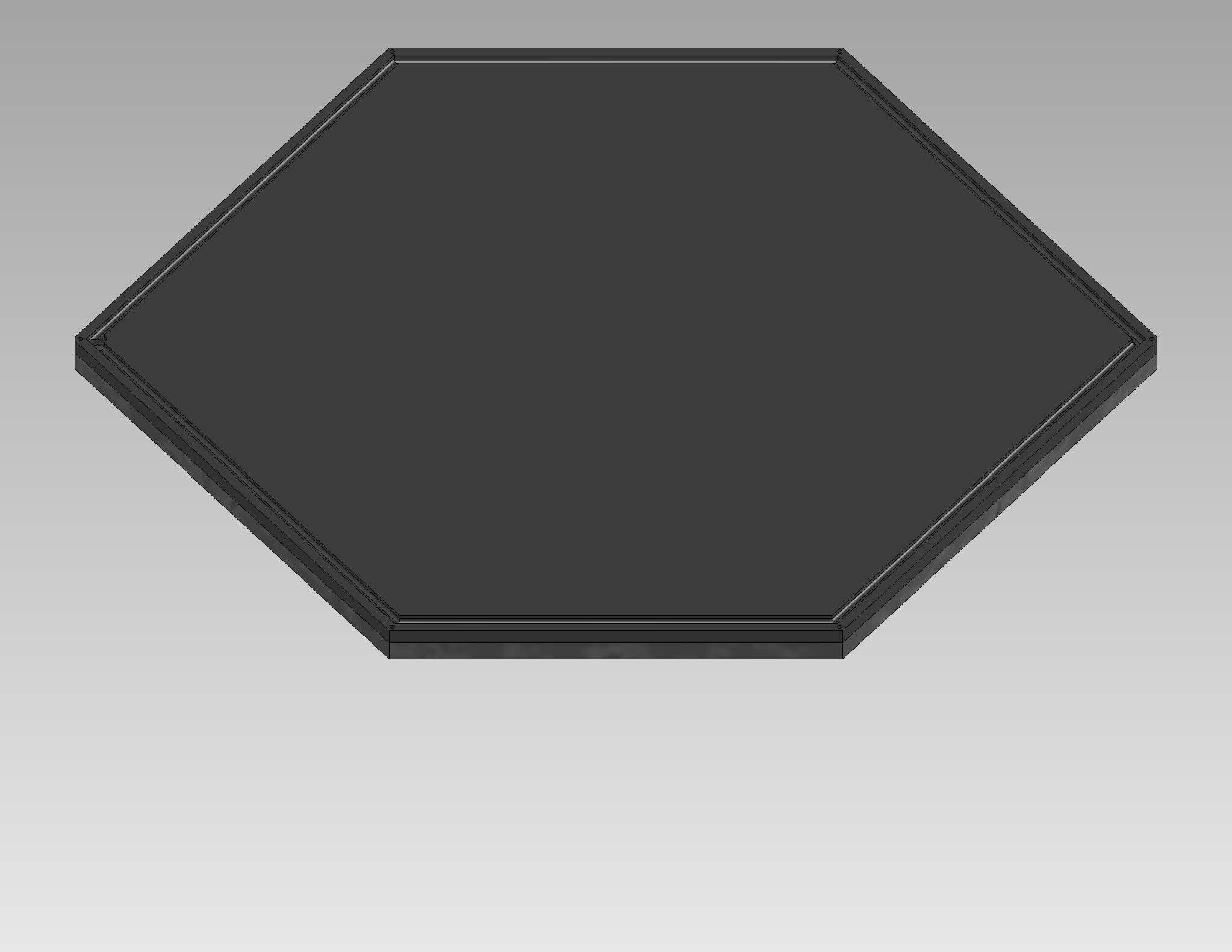
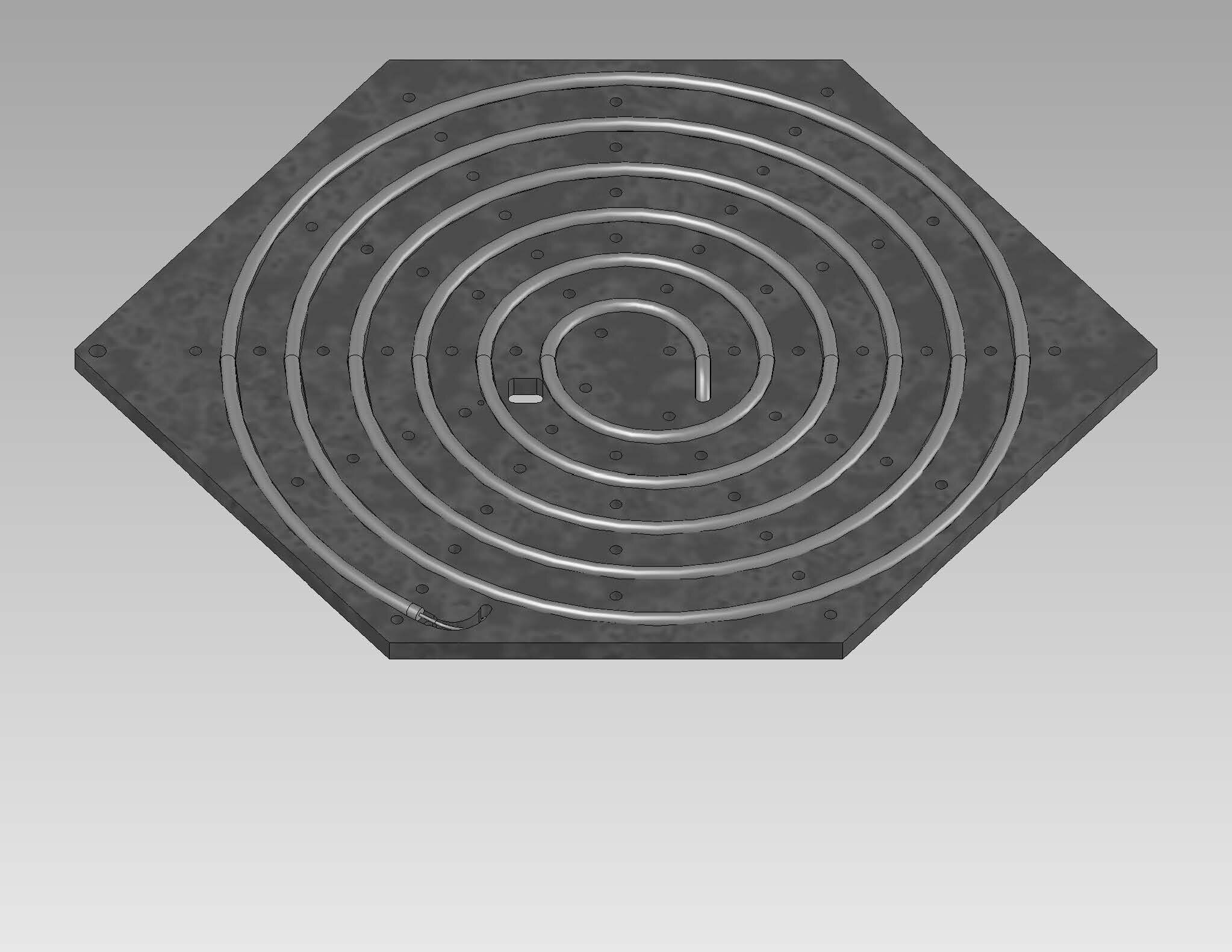
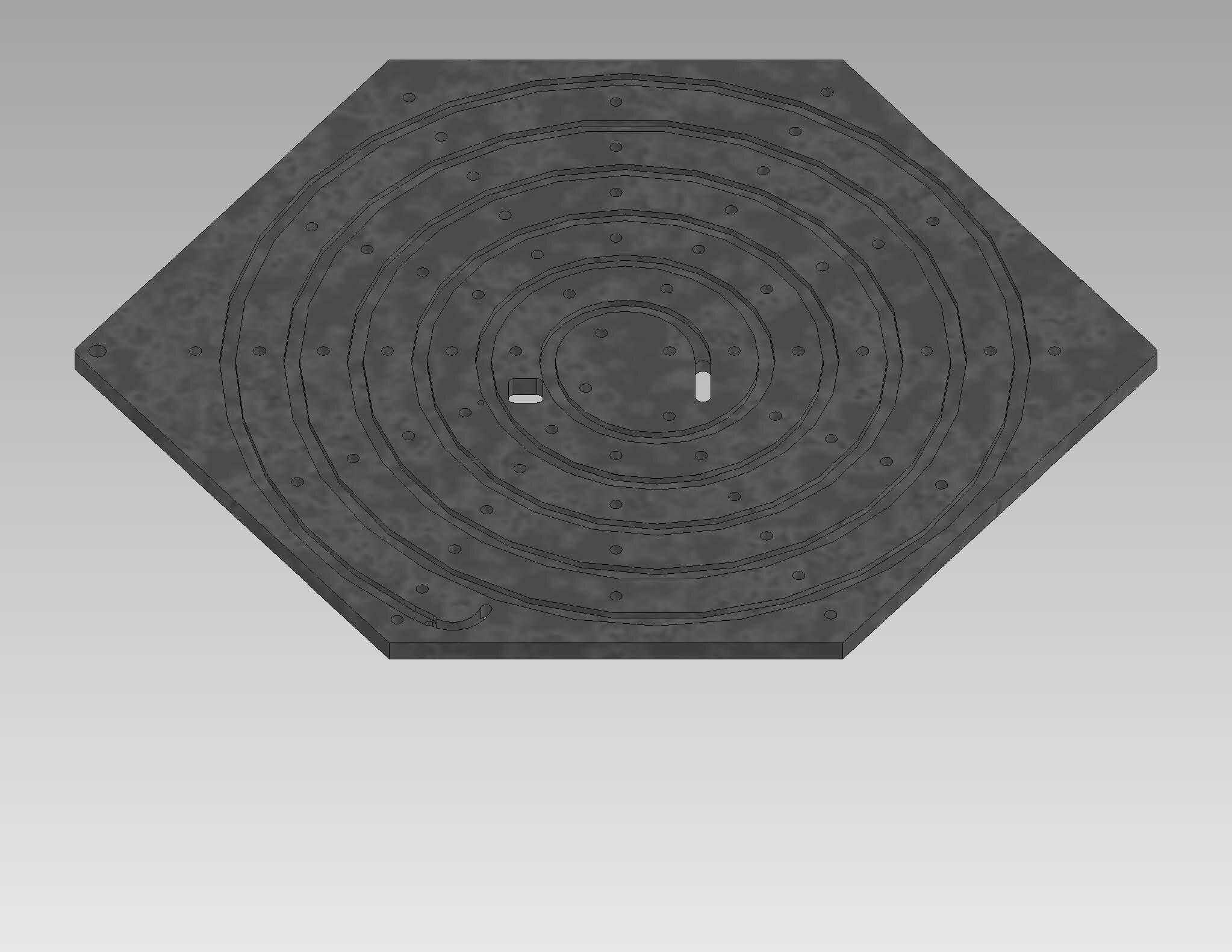
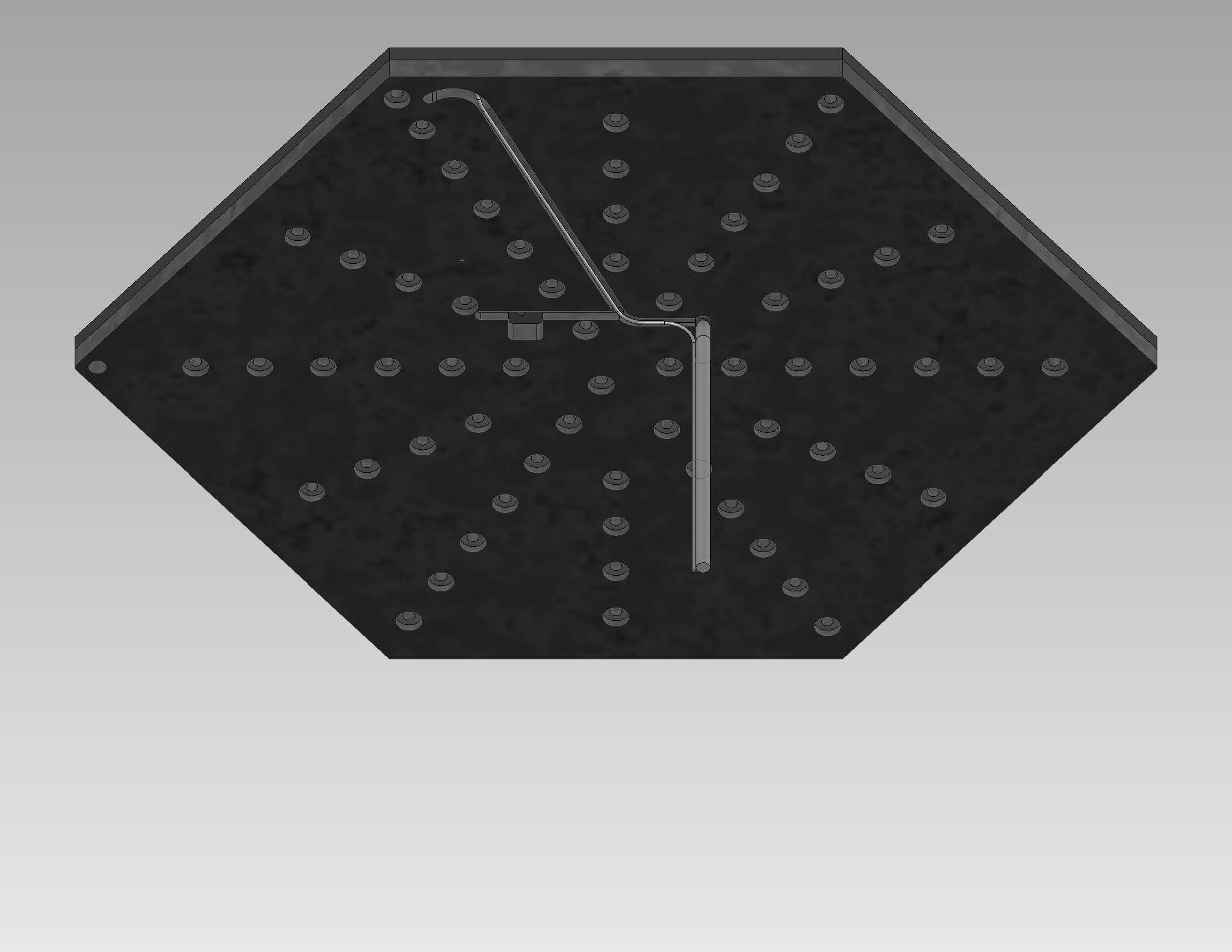
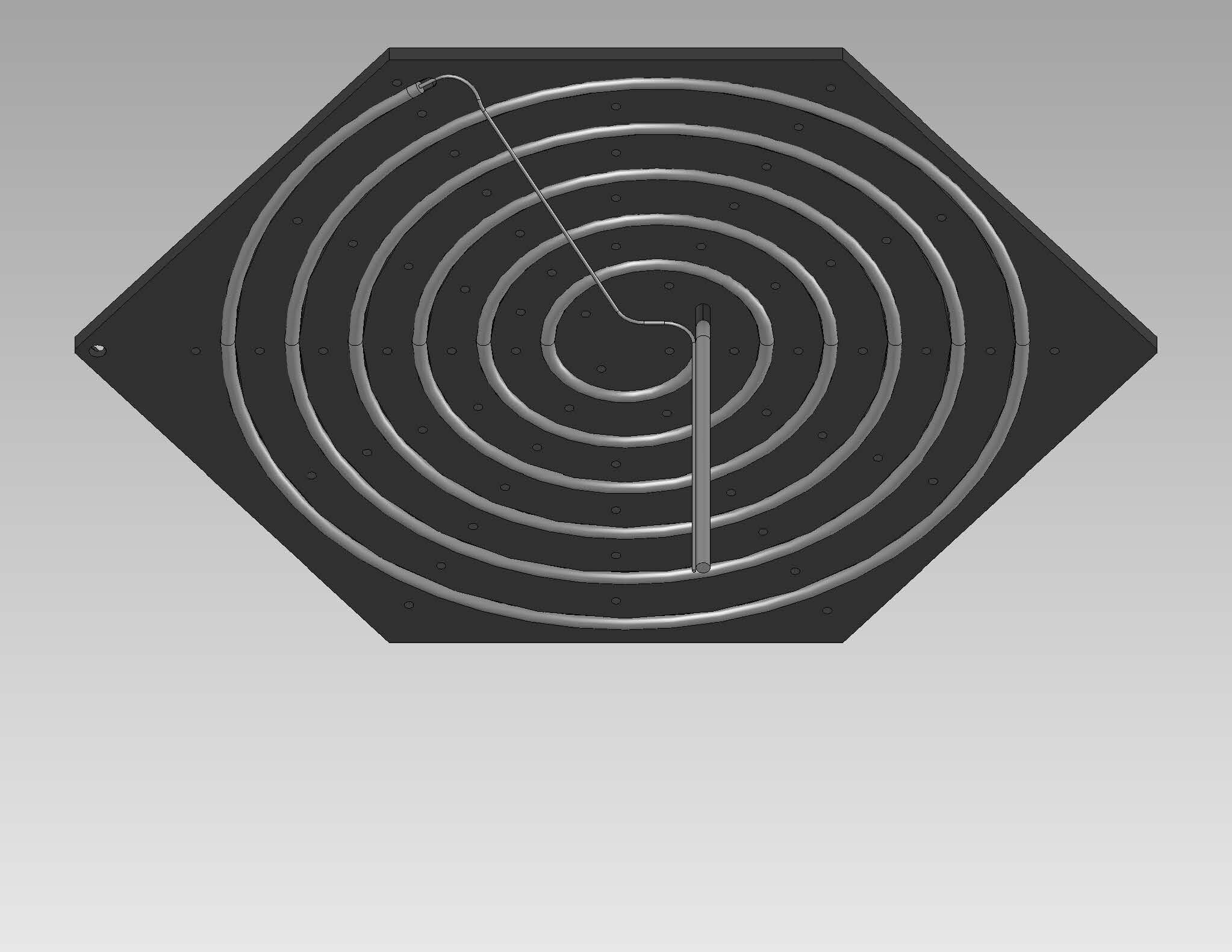
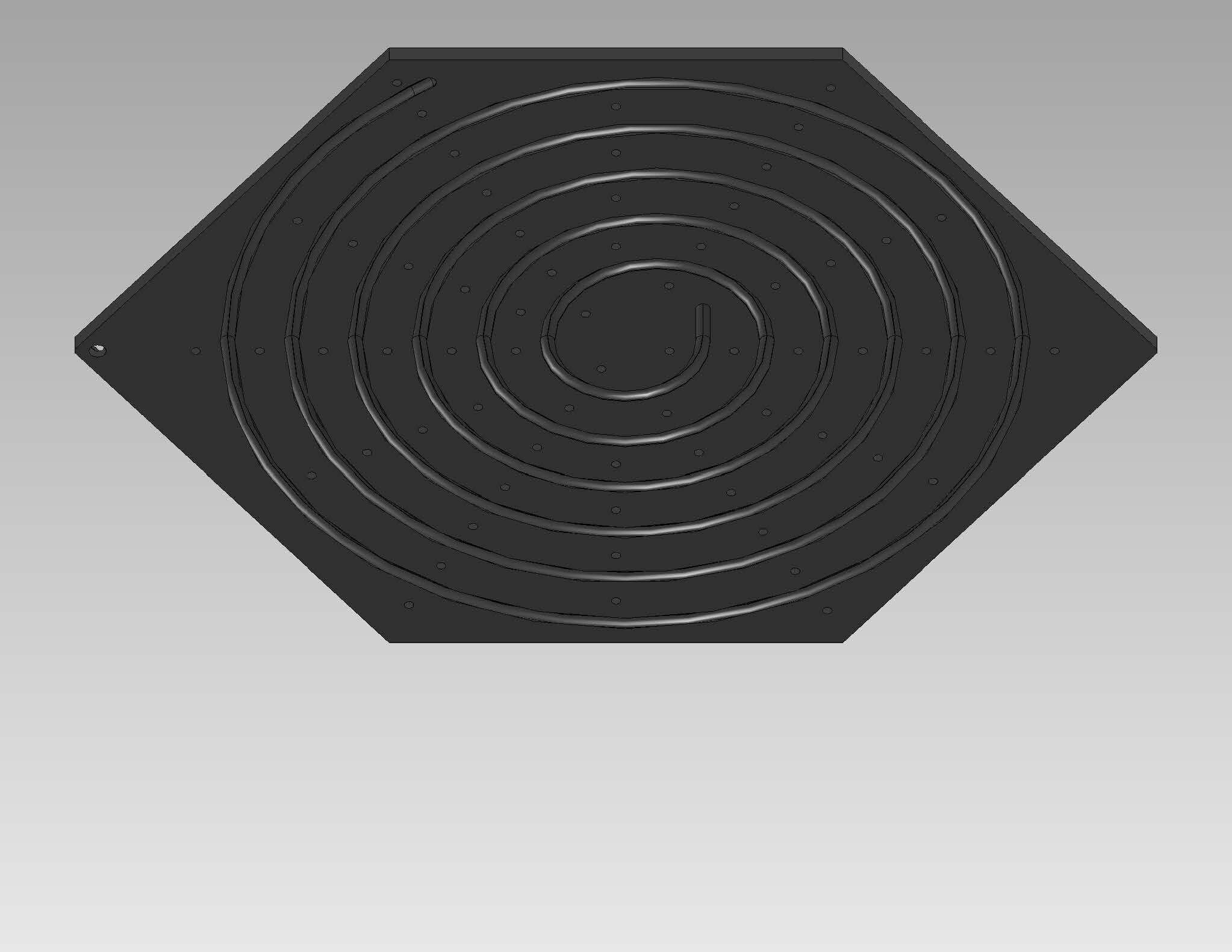




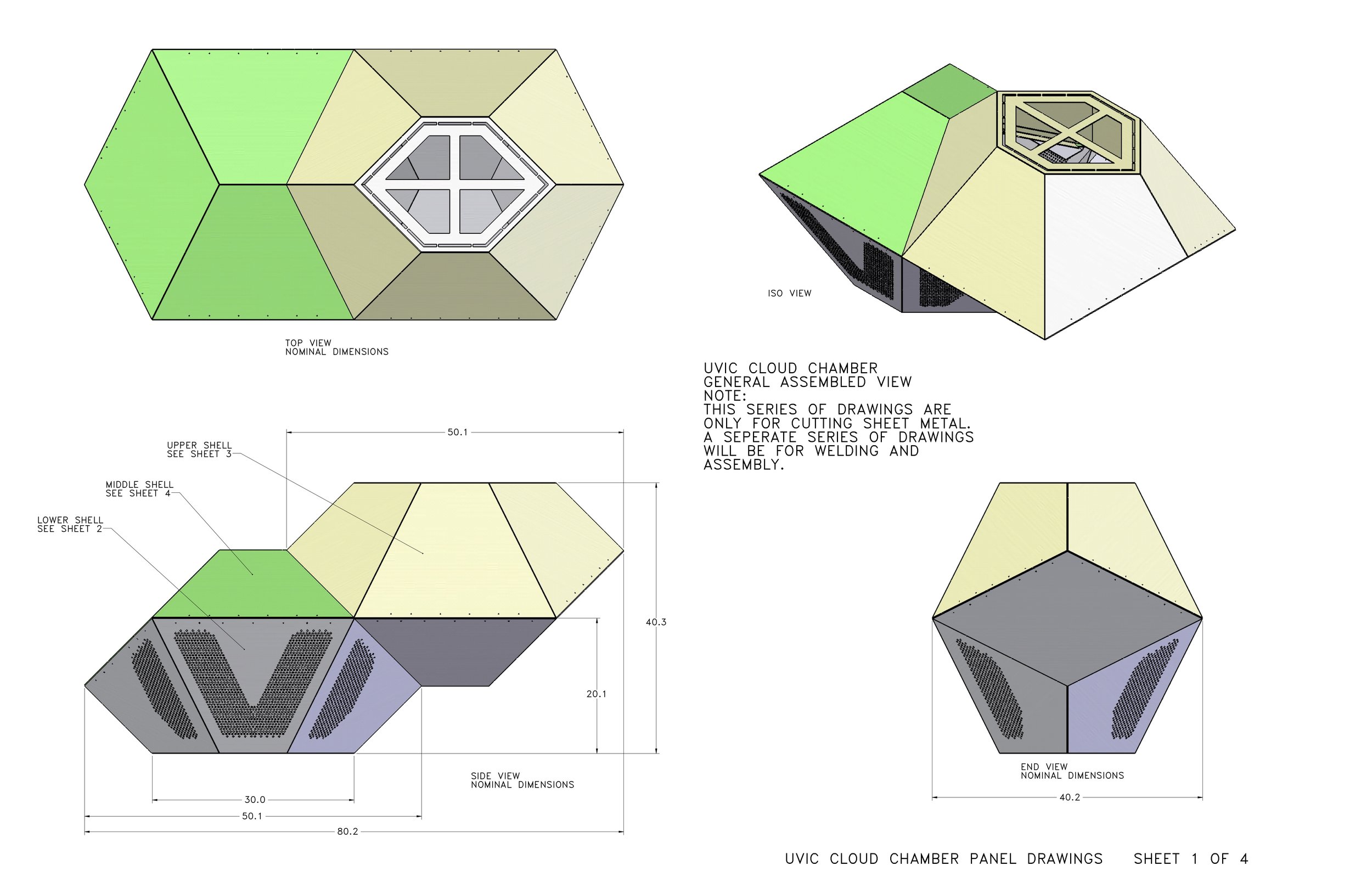
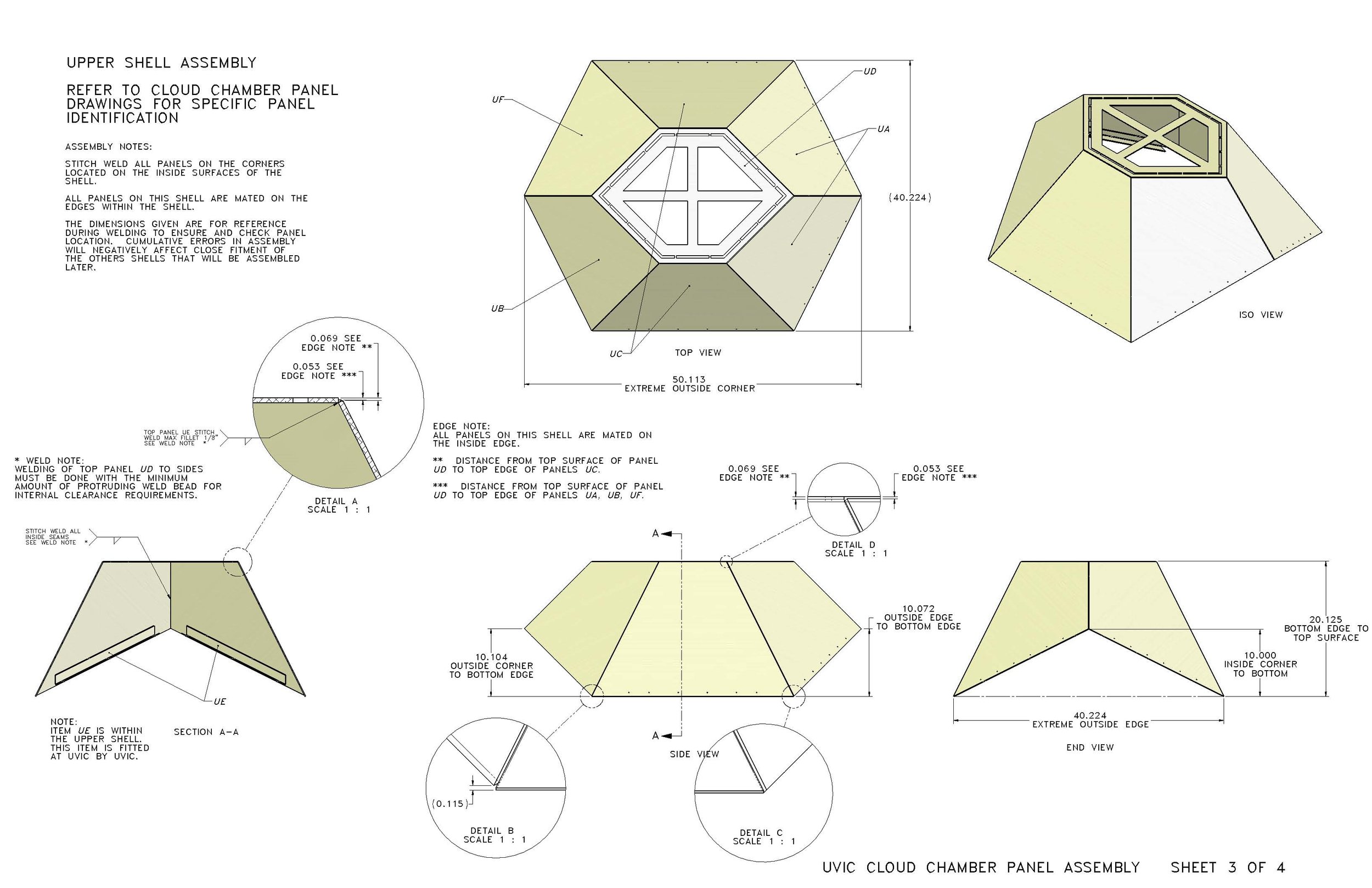
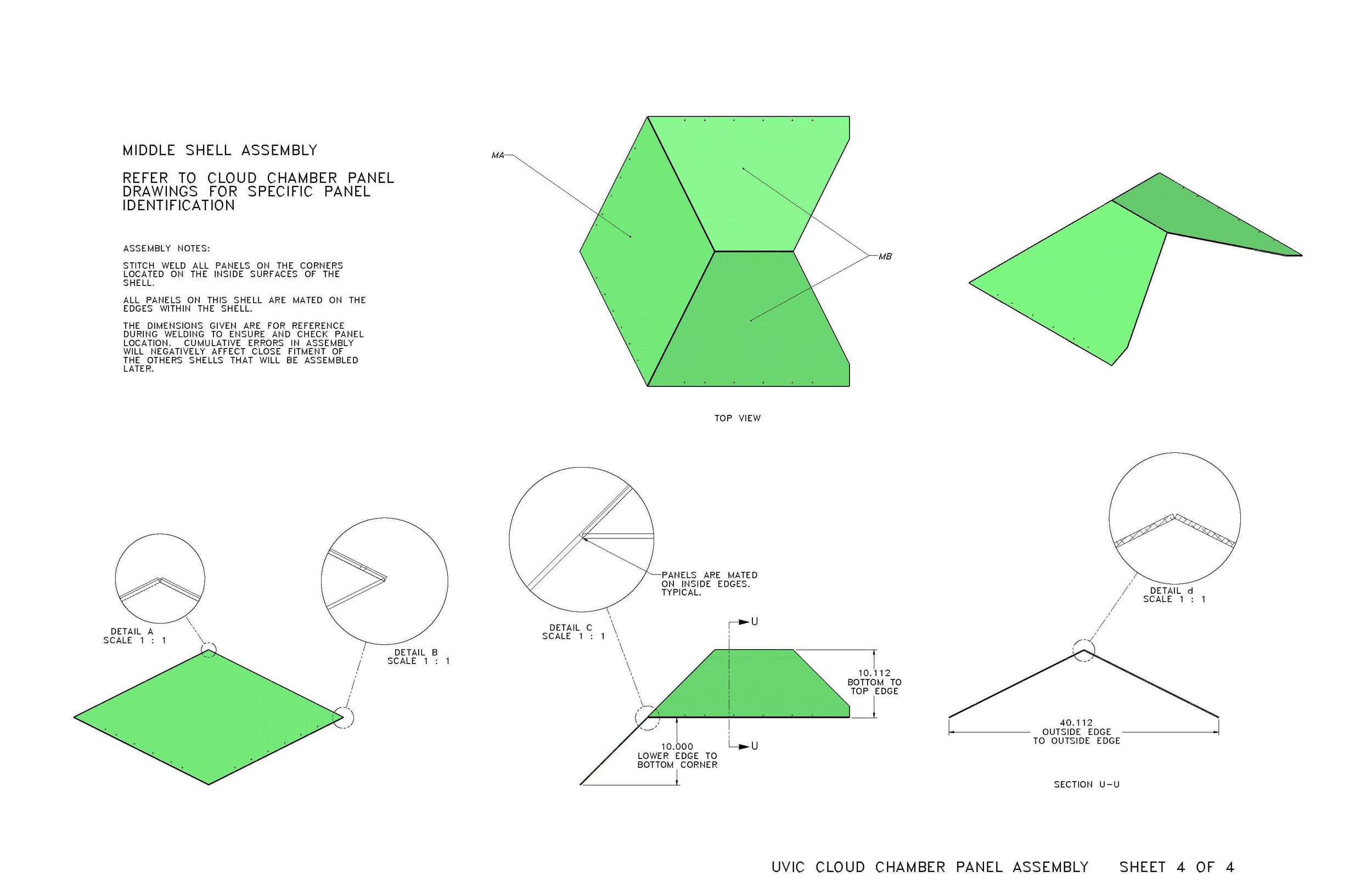

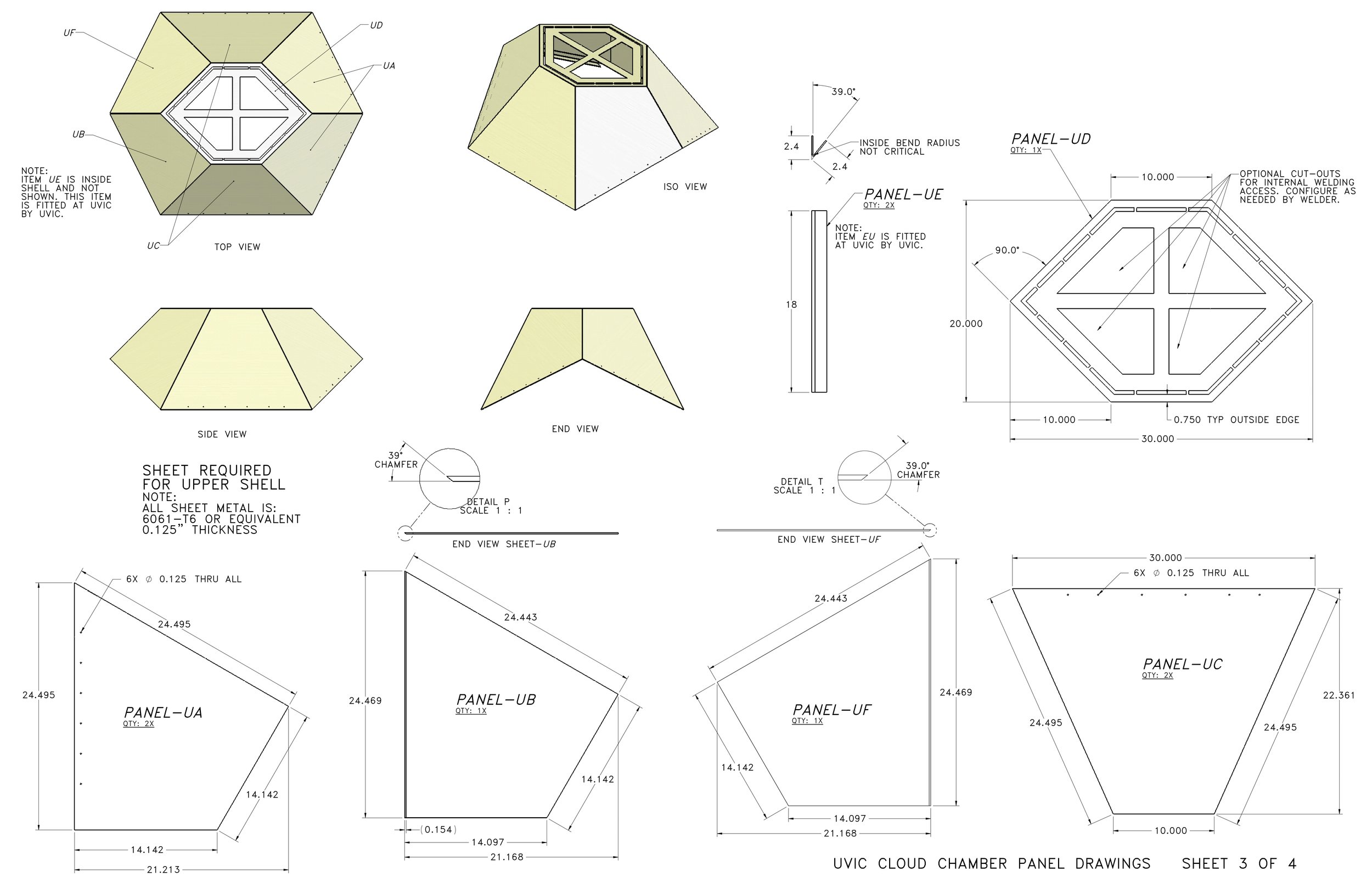

The Cloud Chamber, 2011, 96” length x 48” width x 48” height
Made in collaboration with Dr. Justin Albert and the department of Physics & Astronomy, The Cloud Chamber is a functioning particle detector built for the express purpose of making contrails from cosmic rays visible, to the naked eye, within a freestanding sculpture. Conceived of in 2008 the work was completed in 2011 for an exhibition at The Henry Art Gallery in Seattle and subsequent installation in the Elliott Lecture Hall, as a permanent exhibition within the Dept. of Physics and Astronomy, at The University of Victoria in Canada.
Commissioning agent: Department of Physics & Astronomy, UVic; Project lead: J. Albert, L. Pullen; Lead Engineer: Mark Lenkowski, Triumf;Lead Fabricator: Chris Secord, Machine Shop, UVic; Electrical Engineer: Neil Hokannen, UVic; Fabrication of second shell: Terra Precision (Saanich BC: 2010); Fabrication of first shell: Kontrationeering (Brooklyn NY: 2009); Thermal pane: Aerospace Transparencies (Scranton PA: 2010); Project administration: J. Albert, L. Pullen; Students: L. Anderson, Visual Arts; K. Pachal, Physics & Astronomy; Logistics: L. Pullen / DHL; Sponsors: Visual Arts & Physics & Astronomy, UVic; In-kind: The Henry Art Gallery, University of Washington (Seattle: 2011)

interior view, The Cloud Chamber, 2011, aluminum, scientific apparatus, alcohol, cosmic rays
The detector sculpture developed as a collaboration between Pullen and Dr. Justin Albert from 2008 - 2011 with increasing support from the Department of Physics and Astronomy, at the University of Victoria in Canada where the two leads were assistant professors in the respective departments of Fine Art and Particle Physics. Every aspect of the object is documented by Triumf engineer Mark Lenkowski in Victoria BC and Andy Baker of Kontraptioneering in Brooklyn NY. Fabricated to their specifications Chris Secord, a machinist at UVic produced one object with the cutting services of Terra Precision in Saanich BC while Pullen produced the other in Beech Lake PA with planes cut on a 3 axis router in with Kontraptioneering in Brooklyn. Both objects use 1/8” aluminum (6160 alloy) plate. Electrical engineering was set in place by Neil Hokannen of the dept. of Physics and Astronomy at UVic, and Paul Birney, of Triumf. Two students worked on the project, Laura Anderson from the department of Fine Arts and Kate Pachal from the department of Physics & Astronomy.

About The Cloud Chamber and Related Works on view from March 5 - June 25th in 2011, at The Henry Art Gallery in The University of Washington in Seattle, curator Sara Krajewski wrote this essay. The focus of the exhibition is a detector sculpture made in collaboration with Dr. Justin Albert and the Department of Physics and Astronomy at UVIC, to contain a sustainable, super-cooled -86F environment. Because it does not freeze, alcohol is the perfect medium seeing cosmic rays. it moves within a scientific environmental system. The top layer of the chamber is a piece of glass made like the windsheld of an aeroplane, with thermal capabilities that resist extreeme temperatures and frost. Six inches beneath this surface is an anyodized black copper plate connected to a refridgeration unit. A dense fog of alcohol forms between these surfaces which scientists call the ‘super saturated layer’ which is where we can observe cosmic events in real time, with the naked eye.

Cosmic rays are invisible, omnipresent, energetic phenomena that originate in outer space. In order to see them, specific environmental conditions must be established and maintained; this analog technology of the physics lab from the mid-twentieth century rests inside Pullen’s sculptures. In the Cloud Chamber, a sealed, windowed compartment contains warm isopropyl alcohol that evaporates above a cold plate refrigerated at -96° F. When a cosmic ray passes through this super-cooled mist a contrail is formed. In the Spark Chamber, argon and helium gas circulate inside a multi-tier, conductive structure. The commingled gases ignite in blue sparks as the cosmic rays pass through the specially-generated electric fields.

Lucy Pullen situates her work in the unexpected terrain opened up when the disciplines of visual art, philosophy, and physical science meet. In recent years, the artist’s inquiries have explored invisible things, like a thought or an atomic particle, and the human drive to directly observe these intangibles. Pullen intentionally shifts her work between the everyday and the esoteric as she pursues projects that give structure to the essential uncertainty and randomness of the universe. Drawn to quantum theory as a discipline that embraces these notions, Pullen collaborated with engineers and astrophysicists to create sculptures to house devices that detect cosmic rays as they pass through our earthly environments. The results — Cloud Chamber and Spark Chamber — were on view at the Henry Art Gallery from March 5 to June 26, 2011 and later installed in the Elliot Building lecture wing on the University of Victoria campus.

Aspects of mathematics also interest Pullen as a means of grappling with unknowns. For example, the sculptures are specific geometric forms: the Spark Chamber is a regular octahedron; the Cloud Chamber is a space-filling polyhedron. Here geometry demonstrates various theoretical and physical orderings of space and energy, from perfect Platonic symmetry to mathematical tessellation into multiple dimensions. The truly random nature of the cosmic ray, made visible inside, contrasts spectacularly with the rationalized forms of the sculptures.

Installation view, The Cloud Chamber and Related Works, March 5 - June 25, 2011, The Henry Art Gallery, The University of Washington, Seattle, essay by Sara Krajweski, (photo: M. Wilkes)
Alongside the works that hold the cosmic ray detectors, sculpture doubles populate each exhibition space. If the Cloud Chamber hosts events on a micro level, its double proposes a different, macro-oriented, view. A polished aluminum shell echoes the Cloud Chamber in size and shape; reflective material applied to its base and interior proffer a dazzling optical experience at the moment we step in front of the light source above the sculpture. Duplicate forms of the Spark Chamber also propose alternative optical and physical experiences. An octahedron made of MDF suggests a solid to be penetrated but its surface is covered in non-reprographic blue pastel, a pigment that resists photo-mechanical reproduction and references another form of invisibility. A steel and Plexiglas version mimics the layers found in the function-ing chamber. As we shift our body in relation to the sculpture, we see the playful shimmer of daylight (another form of invisible-to-the-human-eye energy) as it refracts off the planes.

‘The Cloud Chamber and Related Works’ were on view from March 5th to July 26th, at the Henry Art Gallery at the University of Washington, in Seattle Washington and subsequently returned to the Dept. of Physics & Astronomy, University of Victoria, Victoria Canada, where it remains on public view in the Elliott Lecture Hall.

Installation views of ‘ The Cloud Chamber and Related Works’ were taken by Mike Wilkes, whose father, as a physicist, participated in the installation of this work and made himself available to the gallery staff during the exhibition, which was on view from March 5 - June 25, 2011, at The Henry Art Gallery, in The University of Washington, in Seattle.

My collaborator, Dr. Justin Albert, standing near The Last Spike in the railroad, a marker for the most significant engineering development of the 19th century, Promontory Utah, December 2008

Research trip with my collaborator, Dr. Justin Albert, the first person I encountered who has visited The Spiral Jetty, Promontory Utah, 2008

.Every aspect of the sculpture is documented with a drawing. The first shell was made in New York, sent to Victoria, and found to be less than satisfactory to the engineers in our team, so we decided to build a second shell, by first making a set of incredibly detailed drawings. Assembly view #1 of 6 of The Cloud Chamber, was rendered in Solidworks by Triumf engineer Mark Lenckowski, in the machine shop of the Dept. of Physics and Astronomy, at UVIC.

A geometric form that tessellated three dimensionally is scaled as a single object, whose overall dimensions are 8 feet long, 4 feet high and 4 feet wide. Hole patterns allow for air to circulate around the compressors in the base of the sculpture. Assembly view #2 of 6, The Cloud Chamber, Machine Shop, Dept. of Physics and Astronomy, UVIC, rendering by Mark Lenckowski

The exterior aluminum shell of the sculpture is designed to come apart, which allows access to the scientific apparatus within. Each line drawn with Solidworks is a vector, which becomes a path for a tool. Assembly view #3 of 6, The Cloud Chamber, Dept. of Physics and Astronomy, UVIC, rendering by Mark Lenckowski

Vector graphics and three dimensions drawing in a computer functions as an actionable blueprint that can stamp aluminum sheets directly from the file. Material is 1/8” thick, which produces a gap where two planes meet, that leaves room for the weld. Assembly view #4 of 6, The Cloud Chamber, Machine Shop, Dept. of Physics and Astronomy, UVIC, rendering by Mark Lenckowski

Panels have a perforated pattern to allow airflow through the bottom polyhedron which houses mechanical workings for a two stage refrigeration system .Assembly view #5 of 6, The Cloud Chamber, Dept. of Physics and Astronomy, UVIC, rendering by Mark Lenckowski

Panels were punched by Terra Precision in Saanich BC because this method is thought to be more precise thanv cnc. Assembly view #6 of 6, The Cloud Chamber, Dept. of Physics and Astronomy, UVIC, rendering by Mark Lenckowski